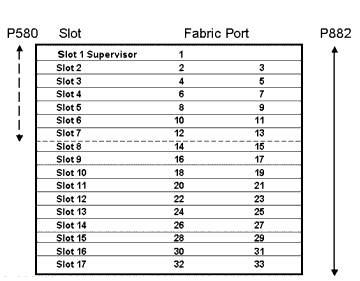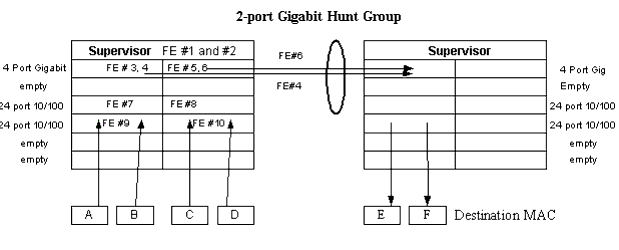|
|
|
See Figure�48. One port in the hunt group will be designated as the base port or flood port. All flood traffic for all VLANs is sent through this port only. All ports are members of all VLANs associated with the hunt group base port. There are 8 non-member Forwarding Engines. Load sharing is accomplished by using the combination of the Source Forwarding engine and the Destination MAC Address to assign a hunt group port. Users A and B are associated with FE#9 and therefore the first port in the hunt group will be used for unicast packets from A to Destination E and from B to E. Users C and D are associated with FE#10 and therefore the second port in the hunt group will be used for unicast packets from C to E and D to E.
When MAC Address E is learned, it is assigned to the first hunt group port for FE#1, the second hunt group port for FE#2, the first port for FE#3, the second port for FE#5, the first port for FE#7, the second port for FE#8, the first for FE#9, and the second port for FE#10. The second destination MAC Address is round-robin assigned in the same fashion and so on.
Figure�48:�Slot to Fabric Port Relationship

Note: All 80-series media modules are L3 capable.
Figure�49:�Load Sharing Example

|
|
|